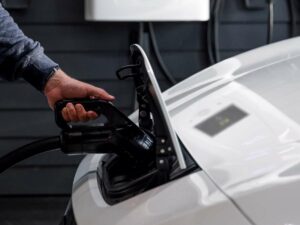Corporate car sharing, i.e. the sharing of vehicles, is becoming increasingly popular in vehicle fleets. After all, it can increase capacity utilization and avoid unnecessary downtime. At the same time, car sharing can reduce the number of vehicles in the long term and cut fleet costs.
But where vehicles are shared and used jointly, misunderstandings and conflicts can quickly arise. A pool vehicle agreement that sets out clear rules for use ensures transparency and clarity. In this article, we explain which points should definitely be included in such an agreement.
Contents
What is a pool vehicle agreement?
A pool vehicle agreement is a contractual set of rules between a company and its employees that defines the obligations and rights relating to the use of pool vehicles. The agreement specifies, for example, which employees have access to the vehicles, how the booking is made and who is liable in the event of damage.
Why a pool vehicle agreement is so important in the fleet
Instruct employees safely?
Train your drivers at least once a year in the safe handling of vehicles in accordance with UVV. The best way to do this is via e-learning
These points should be regulated in a pool vehicle agreement
- Authorized users: The agreement defines which employees are authorized to use the pool vehicles. This can depend on the position or department, for example.
- General obligations: An agreement should stipulate what obligations employees have when using the vehicles. These include, for example, a ban on smoking in the vehicle and proper maintenance and cleaning.
- Purpose of use: Also specify the purposes for which the vehicles may be used. Are only business trips allowed or is private use also permitted? Both eventualities should be clearly stated. If the pool vehicle may also be used for private purposes, this results in a non-cash benefit that must be taxed accordingly. The use of the vehicle between home and work can also be prohibited. Also specify whether journeys abroad open_in_new are permitted.
- Booking procedure: Determine how the vehicles can be booked. For example, you can use car sharing software that offers a clear booking calendar and allows vehicles to be booked via a smartphone app.
- Period of use: The agreement also regulates how long an employee can use the pool vehicle, whether it can be reserved for certain periods and whether there are restrictions on the period of use. Also make a note of where the vehicles must be located outside of working hours, especially if private use is prohibited.
- Accidents and liability: Define in the policy who is liable in the event of an accident or damage and whether an excess must be paid. With an exclusion of liability, companies can reduce their own risk in the event of damage to a minimum or even exclude it completely. What to do in the event of a breakdown should also be part of the policy.
- Return: The regulations should also define guidelines for the return of the vehicle after use.
- Driving license revocation: The agreement should make it clear that if a driver’s license is revoked or a driving ban open_in_new is imposed, the fleet manager must be informed immediately and the use of the pool vehicles is prohibited in this case.
- Sanctions: A pool vehicle agreement should also regulate what happens if employees violate the obligations and specifications. If a pool vehicle is used for private journeys, for example, although this is prohibited under the agreement, clear measures should be set out. This may involve a warning, a claim for damages or even termination.

Taxation of pool vehicles for private use
Tools for flexible vehicle access
A pool vehicle agreement should also clarify how authorized employees are granted access to the vehicles. While personal key handovers in the office usually require a great deal of organization and coordination, there are also digital tools for flexible vehicle access.
With a key box placed in the vehicle or a stationary key box, drivers can access the vehicles around the clock. This not only relieves the burden on fleet managers, but also offers employees a great deal of convenience and flexibility.
Key box
Key box
A key cabinet stores the keys in a stationary location. After reserving the vehicle, employees can open the cabinet using a PIN or an RFID chip, which is located on the company ID card, for example. The corresponding key is released and can be removed – marked by a small light signal. All other keys are not accessible.
The most important facts about the pool vehicle agreement
A pool vehicle agreement is a contractual set of rules between the company and employees that defines the obligations and rights relating to the use of pool vehicles.
Such an agreement is important in order to avoid misunderstandings and conflicts and to clarify the question of liability in the event of damage.
The agreement should regulate aspects such as general obligations, rights of use and purpose, liability, return and sanctions in order to ensure smooth use of the vehicles and define clear measures in the event of violations.
Further Fleet Knowledge
If you liked this article and would like to know more about this topic, we recommend these articles.

Pool vehicles: taxation, benefits and private use

E-car as a company car: taxes, costs and insurance




